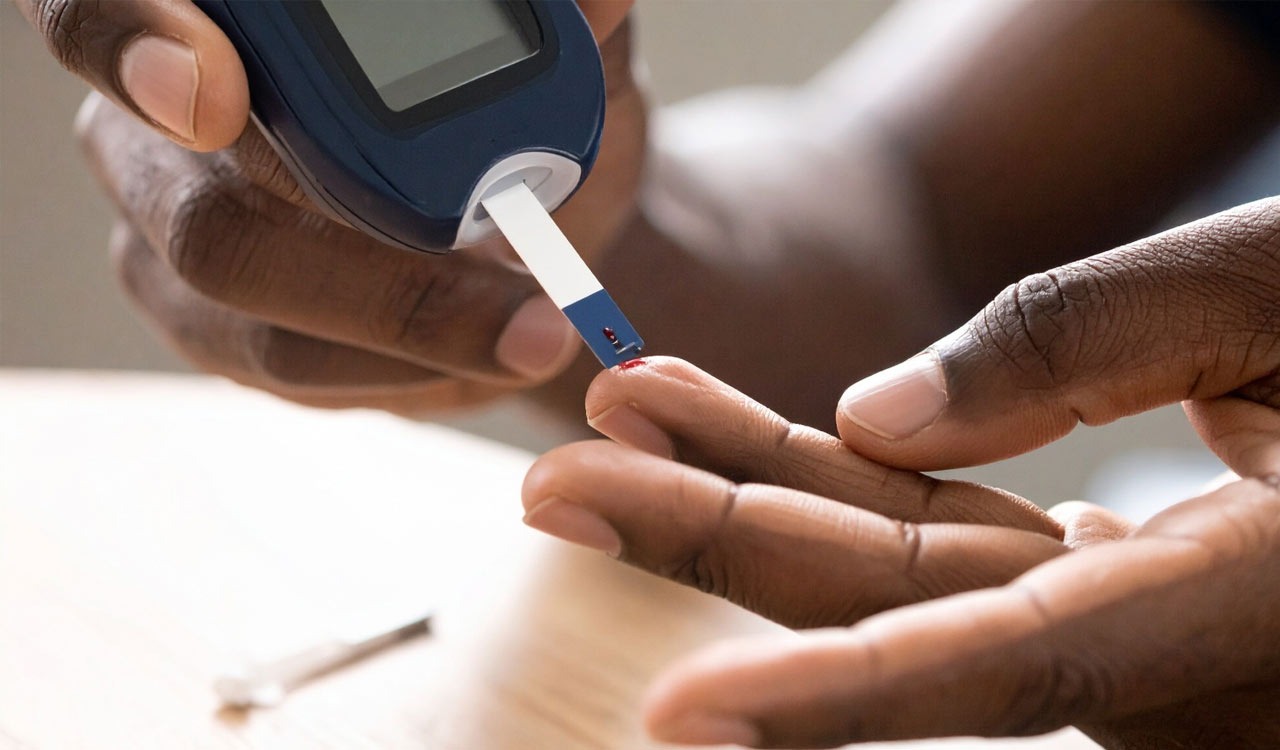BMI may not be best obesity indicator to assess risk for lung cancer
The JTO is an official journal of the International Association for the Study of Lung Cancer. Although the association between measures of obesity and both cancer incidence and outcome are clear in some solid tumour types

Washington: The method used to calculate how obesity is measured may affect whether it is considered a risk factor for lung cancer, suggest the findings of new research published in the Journal of Thoracic Oncology (JTO).
The JTO is an official journal of the International Association for the Study of Lung Cancer.
Although the association between measures of obesity and both cancer incidence and outcome are clear in some solid tumour types such as breast, oesophagal, and colon cancer, the relationship between obesity and lung cancer is more nuanced.
Now, a group of researchers led by Sai Yendamuri, M,D, from Rosewell Comprehensive Cancer Cancer in Buffalo, N.Y., suggests that using traditional methods of measuring obesity, including the body mass index, might be one of the reasons why obesity is not considered a risk factor for lung cancer.
The researchers conducted an examination of patients with lung cancer before they underwent surgery and calculated their excess body weight using visceral fat index measured by CT scans.
“While BMI is easy to measure, its use has been criticized due to its inability to discriminate between fat and lean body mass,” Dr. Yendamuri said. “BMI also fails to account for body fat distribution. It is becoming increasingly recognized that ‘visceral’ or ‘central obesity’ is the primary driver behind the health outcomes linked to high body fat.”
A previous study demonstrated a close correlation between visceral obesity as determined by analysis of a single slice of abdominal CT and a volumetric analysis of visceral fat. This finding demonstrated the feasibility of using such image-based measurements in a large cohort of patients.
“Based on the established knowledge described above, we sought to measure central obesity in a cohort of [patients with] stage I NSCLC [who were] undergoing lobectomy at our institution and examine its association with oncologic outcomes,” Joseph Barbi, PhD, first author of the manuscript, reported. Because patients with early-stage disease are typically treated with surgery alone, without other treatments that may complicate the analysis, the researchers believed they provide a context where the relationship between central obesity and tumour progression can be studied without additional therapy-associated confounders.
Dr Barbi and colleagues examined 554 patients with stage I and II NSCLC undergoing lobectomy. Of these, reliable fat area measurements were obtained in 513 patients: 499 (97.3 %) at L3, 5 (0.9%) at L2, and 9 (1.8%) at L1. Similarly, 159 patients with advanced-stage NSCLC with molecular testing had reliable fat area measurements: 146 (91.8%) at L3, 10 at L2 (6.3%) and 3 at L1(1.9%).
Interobserver correlation of VFI measurements were good (n = 53; R2 = 0.95). Correlation of measurements between L2 and L3 levels (n = 29; R2 = 0.92; Slope = 1.05) and between L1 and L3 levels (n = 28; R2 = 0.85; Slope = 1.05) were also good (Supplementary Figure S1).
Therefore, in the few cases where measurements at L3 were not available, measurements at L2 or L1 were used. Importantly, CT scans of these patients could be used to clearly identify individuals with distinctly predominant visceral or subcutaneous adipose tissue distributions.
“These findings clarify the truly negative relationship that exists between central obesity and lung cancer outcomes, and they present a viable alternative to the use of BMI in retrospective studies of obesity rooted in biology with clear relevance to cancer outcomes,” Barbi reported.
Taken together, the clinical and preclinical findings suggest a common potential mechanism for the accelerating effect of obesity on the development of tumour burden in the obese — namely, an apparently multifaceted immune dysfunction prevalent in the tumours of obese mice and patients, the authors report.
“Our study provides much-needed clarity to the relationship between adiposity and NSCLC patient survival, providing firm scientific justification for the targeting of obesity’s pro-tumour effects, which include decidedly adverse effects on the antitumor immune response,” Dr Yendamuri wrote.
“Our findings also reaffirm the utility and relevance of available mouse models to study further the mechanisms of obesity’s lung cancer-promoting effects. Importantly, they also validate a refined approach for studying obesity in retrospective data sets [of patients with cancer],” he said.
“Visceral obesity is associated with poor overall and recurrence-free survival in patients with early NSCLC, and these findings may inform continued efforts to better predict lung cancer outcomes and management, as well as apply treatments and develop novel therapeutic approaches to prevent or control early-stage lung cancers across a patient pool that is increasingly overweight and obese,” according to the study.
Related News
-
Senate advances resolution curbing Trump’s Venezuela military actions
1 hour ago -
Russian tanker seized by US with 3 Indian crew members on board
1 hour ago -
Telangana: KU Campus police SI, driver caught by ACB while taking bribe
2 hours ago -
Vikram Rathour appointed Sri Lanka batting coach for T20 World Cup
2 hours ago -
BRS accuses Revanth Reddy of targeting university lands for real estate projects
2 hours ago -
GHMC issues new guidelines for Occupancy Certificates in non-high rise buildings
2 hours ago -
Sarfaraz Khan hits fastest List A fifty by an Indian
2 hours ago -
GHMC continues OTS Scheme with 90 percent interest waiver for property tax defaulters
2 hours ago




